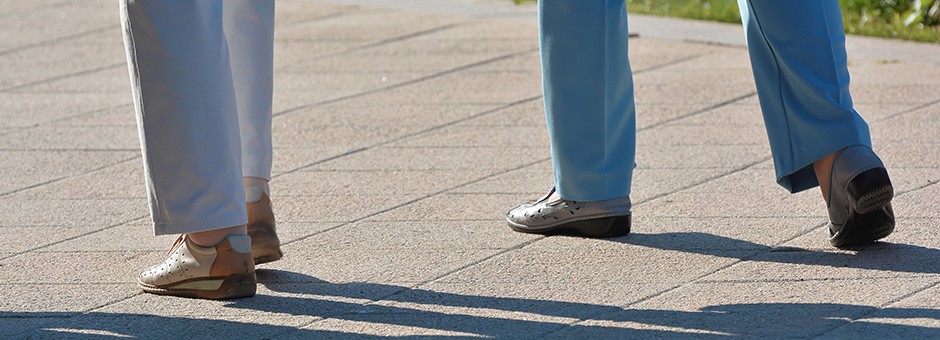
Life around our house is never quiet. I live with a teenage boy. My son, Luke, loves watching “epic fall” videos on YouTube. Usually, the videos depict an extreme sports enthusiast attempting a magnanimous stunt, missing the mark, and bashing his body in a dramatic fall of some sort.
Sadly, though, epic falls aren’t just for adrenaline junkies on You Tube; one in three adults over age 65 will experience a fall this year, and a large percentage of those falls will result in hospitalization.
That’s why it’s so important to spread the word that most falls are preventable. Scientists and medical professionals have invested years of time and resources in researching evidence based methods of reducing falls. The result of all this research boils down to four simple steps everyone can take to dramatically reduce your risk of a fall.
One of my colleagues on the San Diego Fall Prevention Task Force, Sean Dobeck, developed a great acronym to help us all remember these 4 simple ways for “Safely Stepping in your ‘SHOE'”:
S- Strength
Staying active and exercising regularly dramatically reduces your risk of a fall. Exercises that focus on balance, agility, and strength help your body to respond well to avoid tripping. Scientific evidence suggests that activities like yoga and tai chi improve overall balance and agility; while light-to-moderate cardio exercises like cycling or walking improve leg strength. Find an activity you enjoy, and step out!
H- Health
Regular medical check-ups are critical to reducing your risk of falling, especially if you take medications. Many medications cause dizziness, and if you are taking more than one medication, there is a greater likelihood that drug interactions will produce dizziness. Provide your doctor with a complete list of all medications that you take, including herbal/vitamin supplements and over the counter medicines. Also, be sure to ask your medical professional to adjust your prescriptions if necessary to reduce your fall risk.
O- Optical
Evidence shows that compromised vision greatly increases fall risk. As we age, our peripheral vision narrows, our depth perception changes, and our visual clarity decreases. All of these factors contribute to an increase risk of tripping and falling. Having your vision checked regularly and correcting vision problems can help you reduce your risk of falling.
E- Environment
Creating a safe home environment is absolutely crucial to reducing your risk of a fall. Eliminating tripping hazards, like throw rugs and power cords, is an easy first step toward fall-proofing your environment. Ensuring that stairs and other areas of your home are well-lit is another step you can take. Installing bathroom safety features, like grab bars, comfort height toilet seats, and non-slip flooring are imperative. Consider using home mobility aids, like stair lifts or a cane, to help reduce your risk of a fall.
Most falls are preventable, and reducing your risk of a fall is as easy as stepping into your “SHOE.”
We continue to encourage older adults in our community to address home safety concerns early, taking steps to prevent falls, rather than as a secondary reaction after the fall. Action-oriented fall prevention will help people in our community to stay safe and independent at home.
Make sure you are following these 4 simple steps, remembering SHOE, to avoid falls at home.
Article submitted by Kindra French, owner of 101 Mobility in San Diego .